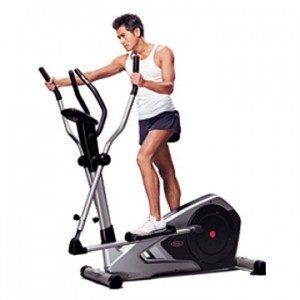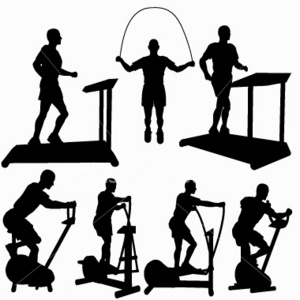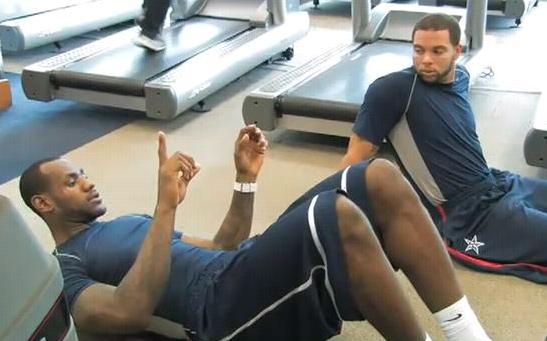Boxing Coach Mickey Wards Training Regiment for Mark Wahlberg

Mark Wahlberg on set for his new Movie
1 Pushup
15 reps
2 McGill curlup
15 reps each leg
Lie faceup—right leg straight, left leg bent so your foot is flat on the floor. With palms under your lower-back arch, lift your head and shoulders (don’t bend your lower back). Pause, then lower.
3 Side crunch
15 reps each side
Lie straight on your left side and brace your feet against a wall or a heavy object. Rest your left hand on your chest, and place your right hand behind your head. Crunch your torso toward your hip. Pause, and then return to the starting position.
4 Hip-up
10 reps each side
Lie on your left side, propping your upper body up with your left elbow and forearm and keeping your knees straight. Raise your hips so that your torso is beyond parallel to the floor and your body forms a straight line from your head to ankles. Pause, and then lower.
5 Medicine-ball twist
15 reps
Hold a medicine ball at chest level, arms straight out. Without moving your torso, rotate your arms far to the left, then far to the right. That’s 1 rep. Continue back and forth as fast as you can.
Low-intensity workout may be effective in building muscle
 Weight training at a lower intensity but with more repetitions may be as effective for building muscle as lifting heavy weights says a new opinion piece in Applied Physiology, Nutrition, and Metabolism.
Weight training at a lower intensity but with more repetitions may be as effective for building muscle as lifting heavy weights says a new opinion piece in Applied Physiology, Nutrition, and Metabolism.
“The perspective provided in this review highlights that other resistance protocols, beyond the often discussed high-intensity training, can be effective in stimulating a muscle building response that may translate into bigger muscles after resistance training,” says lead author Nicholas Burd. “These findings have important implications from a public health standpoint because skeletal muscle mass is a large contributor to daily energy expenditure and it assists in weight management. Additionally, skeletal muscle mass, because of its overall size, is the primary site of blood sugar disposal and thus will likely play a role in reducing the risk for development of type II diabetes.”
The authors from McMaster University conducted a series of experiments that manipulated various resistance exercise variables (e.g., intensity, volume, and muscle time under tension). They found that high-intensity muscle contractions derived from lifting heavy loads were not the only drivers of exercise-induced muscle development. In resistance-trained young men a lower workout intensity and a higher volume of repetitions of resistance exercise, performed until failure, was equally effective in stimulating muscle proteins as a heavy workout intensity at lower repetition rates. An additional benefit of the low-intensity workout is that the higher repetitions required to achieve fatigue will also be beneficial for sustaining the muscle building response for days.
Cardio Exercises That You Can Perform At Home
 Cardio exercises are those that are specifically designed to increase a person’s heart rate and keep it elevated for certain duration of time. This type of exercise routine is also known as an ‘aerobic exercise’. Some of the most popular forms of cardio exercises include brisk walking, swimming, jogging and running where a ‘no break’ routine is implemented.
Cardio exercises are those that are specifically designed to increase a person’s heart rate and keep it elevated for certain duration of time. This type of exercise routine is also known as an ‘aerobic exercise’. Some of the most popular forms of cardio exercises include brisk walking, swimming, jogging and running where a ‘no break’ routine is implemented.
Cardio exercises are those that are specifically designed to increase a person’s heart rate and keep it elevated for certain duration of time. This type of exercise routine is also known as an ‘aerobic exercise’. Some of the most popular forms of cardio exercises include brisk walking, swimming, jogging and running where a ‘no break’ routine is implemented.
Some types of exercises that deal with strength and stretch, such as Pilates, are usually not considered as cardio exercises though it can be done on an aerobic manner. Among the major advantages of cardio exercise routines include:
• Promotes efficient sleep and rest periods
• Aid in strengthening the lungs and also increases the lung capacity
• Improves the body’s daily energy levels
• Burns fats, increases the body’s metabolic rates thus aids in weight loss
You really don’t have to be in a gym or any fitness facility in order for you to perform your daily cardio exercises. All you need is a cardio exercise that warms up those muscles, improves the pumping mechanism of the heart and best of all, and gives you a feeling of wellness and good health. If you don’t have the luxury of driving back and forth from the office down to the gym, or maybe you just want to be wiser on your spending habits, then there are still cardio exercises that you can perform at the comfort of your very own home.
Swimming.
Many fitness experts and healthcare professionals believe that swimming is one of the best forms of cardio exercises. Swimming is an activity that involves every part of your body from arms to legs. A thirty-minute breaststroke is equal to a 400-calorie weight loss. During swimming, your joints are protected so you won’t have to worry about sustaining high impact injuries.
Biking.
This is perhaps among the most fun and exciting home cardio workout routines. Biking is an activity that needs a lot of leg power. And when the huge muscles are working, more calories are also being used up. Gear up yourself with a safety helmet and maybe some kneepads for support.
Running.
This is probably the best home cardio exercise that you can perform anytime and at any place. You don’t need special equipment for this routine. All it requires is a durable set of running shoes and you are good to go. Running on a trail that has few hills on it will help you burn more calories. The best thing about running is that you will never run out of areas or places where you can perform this routine. The running possibilities are endless and the activity is something addictive.
Jumping rope.
Doing the jumping rope is actually an intense cardiac routine especially when performed continuously on a thirty-minute time span
Step aerobics.
This form of home cardio workout helps shape your legs, hips and butt and also shed those extra fat deposits.
It would be vital that you hydrate yourself regularly and eat a healthy diet while on a high cardio workout routine. Cardio exercises should be something where people are looking to become healthier but as long as you take the proper vitamins, minerals and other supplements your hard work will be rewarded.
Lebron James Workout Regiment

MONDAY
Superset 1
1) Pushup
Do as many reps as you can.
2) Pullup
Aim for 10 reps.
Superset 2
1) Dumbbell Snatch
Aim for 5 reps with each arm.
2) Single-Arm Cable RowDo 10 reps with each arm.
TUESDAY
Superset 1
1) Dumbbell Squat
Do eight to 12 reps.
2) Swiss-Ball Hip Raise and Leg Curl
Do 12 reps.
Superset 2
1) Dumbbell Stepup
Do 10 reps with each leg.
2) Single-Leg Standing Dumbbell Calf Raise
Do 12 reps with one leg before repeating with the other leg.
THURSDAY
Superset 1
1) Dumbbell Incline-Bench Press
Do 10 reps.
2) Lat Pulldown
Do 10 reps.
Superset 2
1) Single-Arm Dumbbell Shoulder Press
Do six to eight before repeating with the other arm.
2) Single-Arm Neutral Grip Dumbbell Row and Rotation
Do 10 reps on each side.
FRIDAY
Superset 1
1) Single-Leg Squat
Aim for five reps per leg.
2) Single-Leg Swiss-Ball Leg Curl
Aim for 10 reps with each leg.
SUPERSET 2
1) Dumbbell Side Lunge
Do 10 reps in each direction.
2) Unstable Jump Rope
Skip rope for 45 seconds on a cushiony surface, such as a stretching mat. The instability will help strengthen your ankles.
Botox may treat nighttime teeth grinding
Botox may help prevent teeth grinding at night, results from a small study suggest.
 In the study, patients with nighttime teeth grinding, or nocturnal bruxism, who were given Botox injections reported greater improvement in their condition compared to those given a placebo.
In the study, patients with nighttime teeth grinding, or nocturnal bruxism, who were given Botox injections reported greater improvement in their condition compared to those given a placebo.
The findings suggest Botox could be used to treat nighttime teeth grinding, a common condition for which there is no established treatment, said study researcher Dr. William Ondo, a professor of neurology at the University of Texas Health Science Center at Houston. Although dental guards are used to prevent damage to teeth, they do not prevent the grinding itself, Ondo said.
However, larger studies are needed to confirm the results, Ondo said. The new study was presented here Wednesday (April 25) at the American Academy of Neurology’s annual meeting.
Mixing Workouts with better Nutrition
 When it comes to burning calories, fitness professionals are the experts. When it comes to consuming calories, however, they may not be the best source of information.
When it comes to burning calories, fitness professionals are the experts. When it comes to consuming calories, however, they may not be the best source of information.
Fitness instructors and personal trainers receive very little, if any, nutritional education as part of their training. Yet, they’re constantly quizzed about what foods to eat, what to avoid and what diet works best.
Good trainers stay within the scope of their practice and offer general nutrition advice as it pertains to exercise. Too often, however, trainers provide counselling that is not only well outside of their expertise, it’s just plain wrong.
“Unfortunately, there is a great deal of misinformation about nutrition,” said Liz Applegate, director of sports nutrition at University of California Davis, during the American College of Sports Medicine Health and Fitness Summit and Exposition. “It’s a very personal topic and you’re dealing with all kinds of beliefs and myths.”
Headlines touting the latest nutritional trends and studies abound, making it tough for fitness professionals to decipher whether the information is overblown, understated or worthy of sharing with their clientele.
Professional dietitians, on the other hand, are well trained to evaluate and decode nutritional information. They have at least 3½ years of university level classes devoted to nutrition and nutritional counselling.
The “300″ Workout Regiment

THE “ORIGINAL” 300 WORKOUT
- Pullups – 25 reps
- Barbell Deadlift with 135 lbs. – 50 reps
- Pushups – 50 reps
- 24-inch Box Jumps – 50 reps
- Floor Wipers – 50 reps
- Single-Arm Clean-and-Press with 36 lbs Kettlebell – 50 reps
- Pullups – 25 reps
THE INTERMEDIATE 300 WORKOUT
- Pullups – 25 reps
- Dumbbell Deadlift – 50 reps
- Pushups – 50 reps
- Body-Weight Squat Jumps – 50 reps
- V-Ups – 50 reps
- Dumbbell Push Press – 50 reps
- Pullups – 25 reps
THE BEGINNER 300 WORKOUT
- Body-Weight Rows – 15 reps
- Body-Weight Squats – 25 reps
- Pushups – 15 reps
- Jumping Jacks – 50 reps
- Mountain Climbers – 20 reps
- Close-Grip Pushups – 10 reps
- Body-Weight Rows – 15 reps
Can over exercising damage your health?

1. Injuries
Certain exercises, particularly repetitive, high-impact ones like jogging can serve to exacerbate existing injuries. What’s more, your joints undergo serious strain during exercise which, over time, can result in serious damage. That’s why important to take the necessary precautions before undertaking any serious exercise routine.
If you are having joint problems, you could try switching to low impact exercises that build stamina and flexibility like swimming, biking or yoga. If you do decide to jog, try running on softer surfaces like grass, rather than the unforgiving concrete.
2. Diet
It’s well known that a healthy diet is an equally important component of an exercise regime. However, in some cases, individuals might substitute their healthy eating for exercise. A thorough workout causes intense food cravings, which could potentially ruin a strict diet, particularly if it involves cutting out carbohydrates or certain food groups. Although the extra food will usually be burned off with the right exercise regimen, if your training begins to lag, you may find yourself gaining extra pounds.
3. Improper weightlifting
While weightlifting can be a great way of burning calories and building muscle, if done improperly, it can also cause serious harm.
Dr. Joanne Wu, a neurologist at Unity Hospital in Rochester, N.Y., says poor posture and weights that are too heavy are the main reasons why weight lifting can damage your health.
“It can often cause injuries, both in straining muscles and joints, as well as harming our discs,” she says.
4. Extreme exercising
Though most of us will never have to worry about it, a growing number of cases have emerged of people becoming addicted to exercise. As we exercise, chemicals called endorphins are released, providing a euphoric feeling which could potentially become psychologically addictive over time, according to a 2011 study. This “extreme exercising” can have a negative impact on your health in a variety of ways.
“Doing too much, either in intensity or in duration can cause injuries,” Wu explains. “These injuries can inhibit a person to stay active with an exercise and can often trigger inflammatory states. This can often lead to chronic pain and dysfunction.”
5. Heart health
It’s well known that proper exercise can improve blood circulation, lower cholesterol and improve your overall heart health. However, experts believe that over-exercising can actually have adverse long-term effects on your heart health.
A recent study conducted in Britain on a group of elderly former Olympic athletes found that over half the subjects had exhibited symptoms of muscle scarring on their hearts. While further studies are needed to confirm the theory, it may yet prove a link between exercise and subtle heart damage.
6 Supplements to amplify your workouts
6 Best fitness supplements
Protein
Adopting a high-protein, low-carb diet is not going to deliver the fitness results you seek, but ensuring your have adequate protein (and complex carbohydrates) in your daily meal plan will give you the energy you need to power through workouts and enhance your muscle recovery. Dr. Prisk recommends increasing your protein intake to help grow and repair your muscles after exercise. “Portable protein supplements in the form of bars, powders or ready-to-drink options can be a convenient source of energy and nourishment when used in conjunction with a healthy diet and workout regimen,” he adds.
Branch chain amino acids (BCAA)
Another key supplement that helps with muscle recovery is BCAA. “Supplements and workout formulas containing BCAA can help reduce the amount of muscle breakdown as a result of exercise,” Dr. Prisk explains. “The more muscle you retain, the quicker your body can burn calories. BCAAs go beyond their function as building blocks for muscle and actually stimulate the repair process (muscle protein synthesis).”
Vitamin packs
Though everyone can benefit from taking a multi-vitamin, recreational and competitive athletes are especially in need of nutritional support to help them get through workouts. Dr. Prisk recommends the GNC Women’s Ultra Mega Active Vitapak, which combines scientifically researched nutrients and focused ingredients to help enhance energy, boost metabolism, support bone and joint health, and even improve your mood.
Caffeine
Too much caffeine can lead to the jitters, lack of focus and eventually an energy crash, but in moderate amounts, this natural stimulant can amplify your workouts. According to Dr. Prisk, when taken as directed by a person in good health, supplements and workout formulas containing reasonable amounts of caffeine can boost your performance and limit your perceived exertion so you work out harder. Caffeine can also reduce your exercise recovery time.
Omega-3s
Omega-3 fatty acids are well-known for their heart health and anti-inflammatory properties. These healthy fats can improve joint flexibility, reduce muscular inflammation, and speed up recovery from exercise or injury. Omega-3s are found in fatty fish, such as salmon, and nuts and seeds. If you’re not a fish fan, consider a supplement. Dr. Prisk says, “It can be challenging to get enough from the food you eat — such as fish or walnuts — so taking fish oil supplements, such as GNC Triple Strength Fish Oil 1240 (which contains 40 percent smaller pills that are 300 percent more potent) can be an effective way to get more omega-3s.”
Antioxidants
Antioxidants are another diet buzzword that you shouldn’t ignore. Found abundantly in fruits and vegetables, antioxidants can improve your fitness by improving the post-exercise healing process. Dr. Prisk recommends a healthy antioxidant-rich diet as well as a supplement. “Studies show that taking a supplement with free-radical-fighting antioxidants in advance of your workout may help you improve muscle recovery and reduce soreness,” he adds.
Diabetes and Fitness! Time to Workout!
 According to the American Diabetes Association, 25.8 million people in the United States have diabetes. That’s 8.3 percent of our population. Exercise is part of a healthy lifestyle for everyone, but if you have diabetes, it’s especially important because it helps to regulate blood sugar, manage weight, and reduce your risk of heart disease and stroke.
According to the American Diabetes Association, 25.8 million people in the United States have diabetes. That’s 8.3 percent of our population. Exercise is part of a healthy lifestyle for everyone, but if you have diabetes, it’s especially important because it helps to regulate blood sugar, manage weight, and reduce your risk of heart disease and stroke.
Simply stated: A regular fitness program can save your life!
Here, then, are some tips from Dr. Evan Peck, a sports-medicine specialist with Cleveland Clinic Florida. Remember, though, to talk to your health-care provider before beginning any type of exercise program.
How much exercise do I have to do?
Exercise doesn’t necessarily mean running a marathon. You should aim for a minimum of 30 minutes on most days. Any amount of movement is fine to get started, and you can always increase the time of your workouts to reach that level.
Which type of exercise is best?
If you have diabetes, you should do both aerobic (cardio) and weight-bearing (strength) exercises to become the healthiest you can be. And both types of exercise are generally safe, as long as you’re living free of complications from diabetes.
How do I stay safe?
Drink plenty of water before, during and after you exercise. Have a healthy snack during exercise to keep you energized. Always plan to warm up (stretch) before you begin, and incorporate a “cool down” period into your routine.
Let people know you have diabetes: Wear a medical ID bracelet, necklace or tag to protect yourself in case of emergency.
What types of activities can I incorporate into my workout?
Think about what activities are realistic for you and choose the ones you think you can do. Start slowly. Your activity should be somewhat challenging but not overly difficult. Any type of movement counts — dancing, walking, jogging, even chair exercises.
In addition to formal exercise, there are many opportunities to be active throughout the day:
- Walk instead of driving whenever possible;
- Take the stairs instead of the elevator;
- Park at the far end of the parking lot;
- Try to get up from your desk and walk around the office once an hour while you are at work.
Anything that increases your heart rate and causes you to break a light sweat counts.
How do I get motivated?
Getting started is often the hardest part. Make a plan and set realistic goals. You may find it motivating to keep a fitness journal. Writing down what physical activity you’ve done each day helps you stay focused on your goals.
Choose which type of exercise you will do. The goal is to get active by doing things you enjoy, from gardening, to playing tennis, to walking with friends.
Remember: Keep it fun, because if you enjoy the activity, you will likely do it more often.


